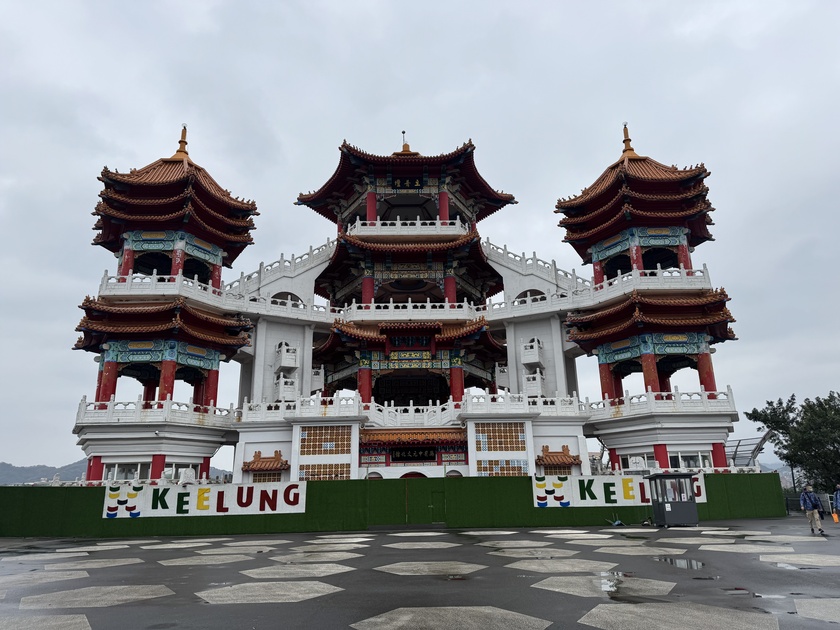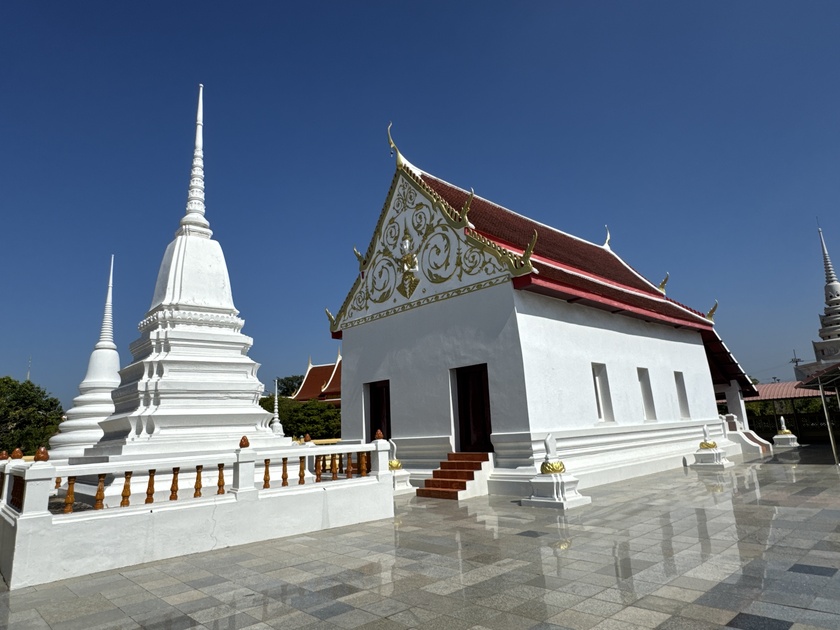Zhongzheng Park is located on the slopes of Dashawan Mountain, to the east of Keelung City. The park is renowned for its striking 25 meter tall white statue of the Goddess of Mercy, which has become an iconic feature of Keelung.
The park offers panoramic views of Keelung City and the harbor and is organized into three levels. The first level features a historic cannon fort. The second level houses a Buddhist library, the Martyrs' Shrine, and the Zhuputan Temple. The temple attracts numerous worshipers on the 15th day of the 7th lunar month for Zhongyuan Ghost Festival. The third level is home to the Guanhai Pavilion, where visitors can enjoy a sweeping view of Keelung and the ocean.
The Goddess of Mercy statue is the park's most prominent landmark and is the largest of its kind in Southeast Asia. Inside the statue, a stairway leads to the top, providing a stunning vantage point. The Zhuputan Temple, a focal point for worshipers during the Zhongyuan Ghost Festival, was originally established...
January 10, 2026, marks National Children’s Day in Thailand (วันเด็กแห่งชาติ), and the Royal Thai Air Force (RTAF) is hosting one of the most popular and exciting events at Don Mueang (specifically at Squadron 601, Wing 6, opposite Don Mueang International Airport, along with the nearby Royal Thai Air Force Museum and Thung Si Kan small airfield).
This annual air show is a highlight for families, especially children, offering thrilling aerial displays, close-up views of aircraft, and various fun activities to inspire youth and showcase Thailand’s air defense capabilities. The event is free to attend and draws huge crowds—often over 100,000 people!
This is a free event and really a lot of fun for everyone, not just military enthusiasts.
F-16 Fighting Falcon: RTAF Air Show Children’s Day 2026 การแสดงบินวันเด็ก กองทัพอากาศ 2569 Bangkok
Wat Tum (วัดตูม) is an active Buddhist temple located off Ayutthaya’s city island in the northern Wat Tum Sub-district, Phra Nakhon Si Ayutthaya, Thailand. While its exact construction date is unknown, it is believed to predate the Ayutthaya Kingdom (1351–1767), making it one of the older temples in the region. The temple was abandoned after the fall of Ayutthaya in 1767 but was later renovated during the reign of King Rama I (1782–1809) in the early Rattanakosin period.
Key Features and Significance
Wat Tum served as a ceremonial site for victory rituals before military parades, reflecting its cultural and historical importance during the Ayutthaya period.
The temple houses a revered bronze Buddha statue, “Luangpho Suk,” with a unique feature—a removable bun (topknot). Inside the bun, there is a cavity where clean water mysteriously seeps and never runs dry. This phenomenon is considered a wonder, and the bun is opened for public inspection only on the first day of each ...
Wat Som วัดส้ม
Wat Som or the Monastery of the Citrus Fruit. It is situated in the Ayutthaya Historical Park east of Khlong Chakra Yai and Somdet Phra Sri Nakharin Park (grandmothers park).
There is no record of when exactly the monastery was built. Experts do estimate it to be feom the early Ayutthaya era, somewhere around 1350 to 1488 because of the shape of its main Khmer style prang and the decorative stucco.
The prang has some of the best preserved stucco ornaments of any temple in Ayutthaya. There are highly detailed geometric patterns and a number of mythological figures like Rahu eating the moon during an eclipse. Its lintels are especially worth a look.
To the east of the prang lies the foundations of a small wihan that is down to its base. You can see what it would’ve looked like but there are no walls remaining.
According to the study of the principal pagoda, it was made from bricks and decorated with lintel and stucco reliefs. It indicates the structure revolution ...













































